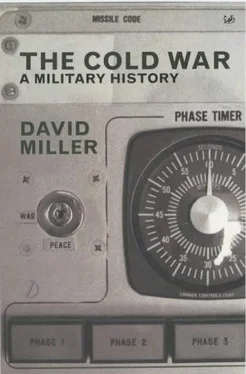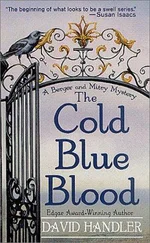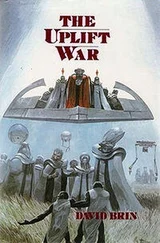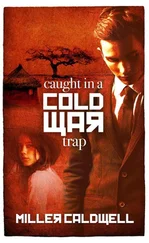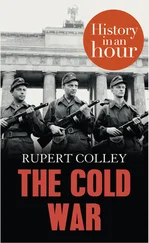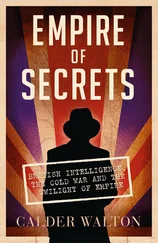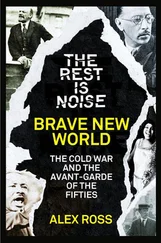• the Western Union was renamed the Western European Union.
The FRG acceded to the NATO alliance on 5 May 1955, and on 14 May the Soviet Union announced the establishment of the Warsaw Pact (see Chapter 6). Despite the resulting furore, however, with some treaties being torn up and new ones being signed, the four Second World War allies were still able to sign the Austrian Peace Treaty on 15 May, ending the military occupation of that country.
A Four Power summit was also held in Geneva to discuss a possible peace treaty with Germany, but two sessions – the first in July, the second in October – failed to reach a satisfactory conclusion. The year ended with the Soviet announcement of a policy of ‘peaceful coexistence’, but any optimism generated in NATO was dashed in 1956 by two major events. The joint Anglo-French invasion of Egypt was the first crisis to create serious strains within the Alliance, while the major external event was the Soviet invasion of Hungary, which once again demonstrated the Soviet Union’s determination to maintain its hegemony in eastern Europe. The threat was further enhanced by Soviet progress in the ‘space race’, where a number of successes, such as the launch of the first space satellite in October 1957, showed a capability with major repercussions for the arms race.
In the spring of 1960 the Soviet Union suddenly announced that it had shot down a US ‘spy plane’ on a flight over its territory and had captured the pilot, who had parachuted to safety. US president Dwight D. Eisenhower had little alternative but to admit that the USA had been conducting espionage flights, and announced that they had been suspended forthwith, but his Soviet opposite number, First Secretary Nikita Khrushchev, refused to accept this and stormed out of the 16 May Geneva summit conference in protest.
NATO’s momentum increased as members realized that it was a source not only of military but also of political strength. The ‘Athens Guidelines’, issued in 1962, gave a broad outline of the circumstances under which NATO would consider using nuclear weapons and what political discussions might be feasible in a crisis. Later in 1962, however, the Cuban Missile Crisis, when the Soviet Union attempted to place nuclear missiles on the Caribbean island, overshadowed everything that had gone before. The USA and the USSR confronted each other in the western Atlantic. NATO was essentially on the sidelines, although the Alliance issued a formal endorsement of the US actions. One of the outcomes of the Cuban crisis was that in 1963 the USA and the UK assigned some of their existing nuclear forces to NATO, but a related proposal for a NATO-owned and -operated nuclear force came to naught.
In 1963 US president John F. Kennedy paid an extremely successful visit to Europe, which included his famous ‘ Ich bin ein Berliner ’ speech in West Berlin. His assassination later in the year came as a major shock to NATO, although there was muted relief when it became clear that this was not the result of some Soviet plot. Then in 1964 Khrushchev was ousted in a bloodless coup and, on 16 October, China exploded its first atomic bomb.
The year 1966 saw a succession of problems with France culminate in the announcement that French forces would be withdrawn from the integrated command structure (see Chapter 4). A corollary was that NATO had to remove all installations not under French command from French soil, which caused a major exodus of headquarters to the Low Countries, and of US military facilities to West Germany and the UK.
In 1967 the Military Committee conducted NATO’s first major strategic review since 1956, proposing a change from the ‘tripwire’ strategy [1]to ‘flexible response’ which was approved at a December 1967 ministerial meeting. [2]Under this new concept, NATO devized a multitude of balanced responses, both nuclear and conventional, which, in the event of Warsaw Pact aggression, could be implemented in a balanced fashion, depending upon the prevailing circumstances. {1} That year also saw the publication of the ‘Harmel Report’ on Future Tasks of the Alliance , which restated the principles of the Alliance, stressed the importance of common approaches and greater consultation, and drew ‘particular attention to the defence problems of the exposed areas e.g. the South-Eastern flank’. {2}
In 1968 Communist eastern Europe suffered yet another of its periodic upheavals, this time in Czechoslovakia, leading to an invasion by Warsaw Pact forces, which, while NATO took no overt military action, did cause the Alliance to review its responses to aggression. NATO also issued a warning about the dangers inherent in the Soviet advocacy of the right to intervene in the affairs of a fellow member of the ‘Socialist Commonwealth’, a somewhat elusive body whose existence was not recognized by the United Nations. However, by doing nothing to interfere with the invasion of Czechoslovakia, NATO members appeared to give at least tacit acknowledgement to the existence of a Soviet ‘Great Power sphere of influence’ in which the rules which normally governed the behaviour of smaller states did not apply.
The following two years saw important diplomatic initiatives. In late 1969 the first of the Strategic Arms Limitation Talks (SALT) was held in November; this was followed in December by the launch of the West German government’s ‘ Ostpolitik ’. Chancellor Willy Brandt’s strategy proved very fruitful and resulted in a German–Soviet Treaty in August 1970 and a German–Polish Treaty four months later, and these were accompanied by direct talks between West and East Germany, which started in March 1970. In addition to all these, France, the UK and the USA took a separate initiative by starting talks with the USSR on Berlin.
The NATO proposal for talks on Mutual and Balanced Force Reductions (MBFR), which had first been made in 1968, finally elicited a Soviet response in 1971. Other talks also bore fruit in 1971, with the signing not only of the Quadripartite Agreement on Berlin – the first such written agreement since 1949 – but also of an agreement between West and East Germany on civil access to the city. Then, in the following year, both the Anti-Ballistic Missile (ABM) Treaty and the Strategic Arms Limitation Treaty Round I (SALT I) were signed, and discussions on SALT II started.
This series of successes in the early 1970s gave rise to one of a periodic series of feelings of optimism, which led in May 1972 to the adoption of a NATO proposal for a Conference on Security and Co-operation in Europe (CSCE), to be held in Helsinki. The preparatory round of CSCE talks ended in June 1973 and the conference proper began in July, attended by representatives from thirty-three European states (Albania was the only one refusing to attend), plus the United States and Canada. The feeling of real progress continued with the opening of the MBFR talks in Vienna in January 1973.
This apparently new era in East–West relations, coupled with unprecedented economic well-being in most NATO countries, inevitably led to a lessening in the cohesion of NATO, but the Alliance continued. A salutary lesson from outside Europe came in October 1973, when the Egyptians carried out a major attack across the Suez Canal which took the Israelis completely by surprise – an ominous warning of what might happen in Europe if NATO lowered its guard. In addition, the Arab–Israeli war dragged in both the USA and the USSR, both of which made threatening gestures, including placing at least part of their nuclear forces on a higher alert status. Although direct confrontation was averted, the events reminded NATO members of the dangers of a sudden crisis – a reminder which was emphasized by evidence of a continuing Soviet military build-up in eastern Europe.
Читать дальше
